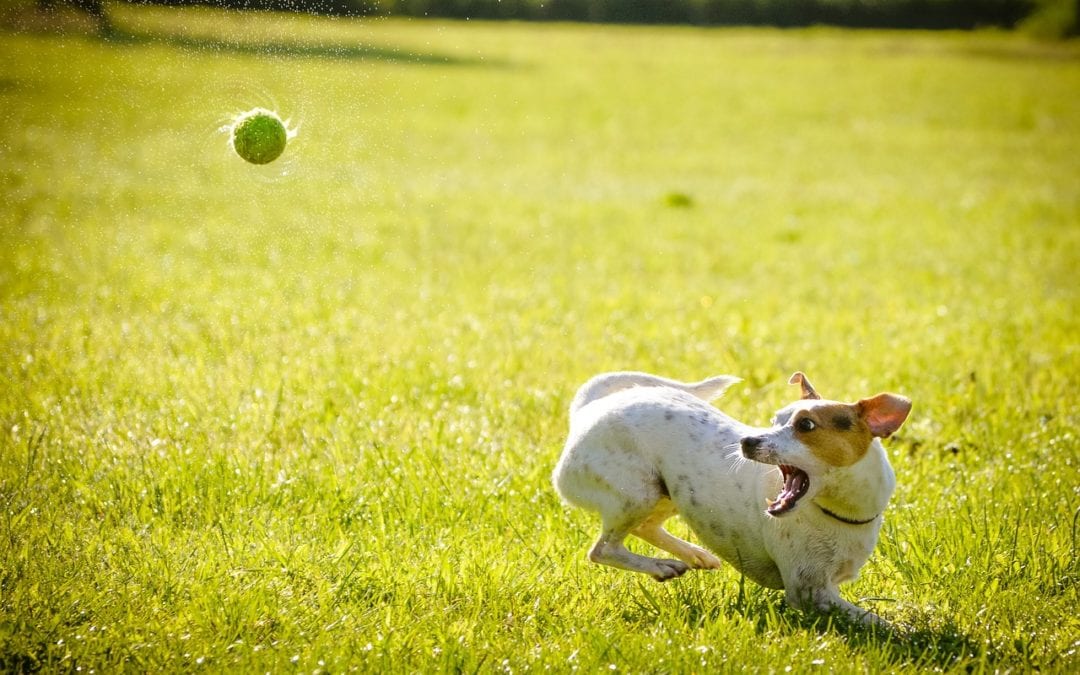I said “that’s a cruciate” as Brynn was taking him to get a weight. Bo was brought into the exam room and we got the owner on iPhone Facetime. Even though I was pretty sure it was a torn cruciate ligament or ACL tear, I did a full and complete physical exam. Starting at the nose and heading back, I checked everything else before checking the back legs. Bo had some tartar on his teeth and periodontal disease (grade 2/4) and was still intact. Everything else looked good.
Moving on to the back legs, I checked the right leg first. Regardless of the history, this is the leg Bo was still walking on. (Many people look at the dog and assign right and left based on which side they are looking at, but the correct way is to fit yourself in the pet’s point of view and then it is their right and left.)
Bo’s right leg had a small drawer sign and medial buttress buildup. In other words, the tibia rights forward under the femur in a drawer opening like move. The ligaments on the medial (inside) aspect of the knee have become thickened and calcified. And this was the good leg. On the left leg, the drawer sign was prominent and quite painful. Bo was a reasonably good sport, but let us know he wasn’t fond of me messing with his knee.
After the exam I was sure Bo had a cruciate tear, but needed to check other sources of pain. Radiographs (x-rays are the beam, the picture of the beam is a radiograph or rad) are not useful to diagnose a cruciate tear. They do help to establish the amount of arthritis that is present in the joint, but the ligament doesn’t actually show up on a radiograph.
Thermal imaging is quite useful however. Thermal imaging is used in medicine to visualize the presence of temperature variations. The skin temperature can reflect the presence of inflammation in underlying tissues or where blood flow is increased or decreased due to injury or disease. Although the small computer and camera set up is almost as expensive as a x-ray machine, there are not the safety issues and positioning does not have to be as precise. That means it is much cheaper for the client. In this case, Bo had the expected hot spots on both knees and he had a hip and hock that was starting to be an issue because of the increased stress of limping.
It had been a while since Bo had been to the vet and I suggested that we get him caught up on some vaccines and tests. The fecal analysis was negative, that is good, but the vector borne disease blood panel was positive for Lyme disease. Lyme disease is a crippling arthritic disease carried by ticks. At some point in the past, Bo had been bitten by a tick that carried the disease. We normally do a CBC or complete blood count to see if they are sick with the disease or have just had it in the past. Bo’s white blood cell count was high. He would need to be on antibiotics and watched to make sure a disease did not progress into life threatening consequences. We did talk about the fact that many intact male dogs have prostatitis (inflamation or infection of the prostate) and need to be castrated.
Surgery is an option for a cruciate tear, but no matter what, the ligament is torn and cannot be replaced. Many people expect surgery to fix everything, but no matter what, there will be damage. If there is not a meniscal (cartilage) tear, many times rest and anti-inflammatories will help enough. We determine that Bo likes his combination of NSAID (non steroidal anti inflammatory drugs) and gabapentin flavored with peanut butter and M’Kinzy starts mixing it up.
By now, Bo’s dad had been in the car for a bit. I called to touch base with him and give him some results. Bo’s dad loved him dearly and said he was his best friend. We get that! I love my family, but sometimes they can be a tad demanding. Whiskey, Tango, Ryker and Taz love me no matter what mood I am in and provide comfort no matter what kind of day I had.
Arthritis and degenerative joint disease is not something that I can cure. We have about 17 different things we can do. Bo got some of them today. He will have to have a followup for his high white blood cell count and to make sure we are doing enough for his joint pain. If he needs it, we can do physical therapy, adequan injections (makes the joint fluid more cushiony) and other things. We talked about possibilities and costs.
With that guidance, we added a cold laser treatment. 900 nanometer light penetrates the skin and stimulates the ATP cycle (energy). This increases circulation and increases pain relief. Indeed at the end of afternoon appointments, Bo left touching his leg down after being three legged lame on entry. Sometimes a package of several treatments is used. We will see how Bo does. With the antibiotics, pain meds and rest, he should do well.
My friend sent this after reading my article: An arithmetic dog! Putting down three and carrying the one.

